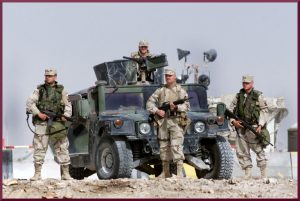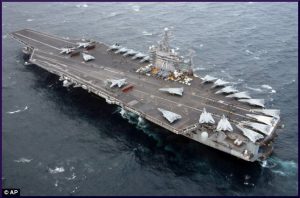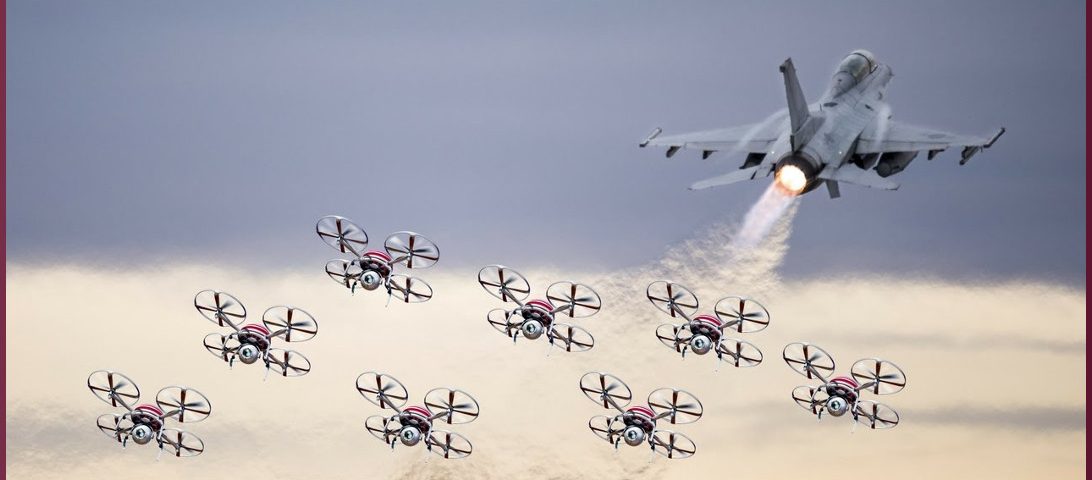by Matthew Hoh, edited by Nick Mottern, published on KnowDrones
~ My concern is where the US military presence is headed in the Greater Middle East, and Muslim world: Less footprint, greater use of remote or standoff (U.S.- based) attack measures, satellite/space based resources and the use of proxy forces to do the killing and destruction.
~ Major bases such as the CENTCOM headquarters in Qatar and the Naval headquarters in Bahrain will remain. Necessary for headquarters staff, refueling and logistics, and as a command hub for operations.
~ Necessity of and reliance on other bases outside Greater Middle East will grow. Variety of reasons, but technological limitations and environmental limitations, such as that atmospheric and curvature of the earth issues limit relay of communications. For example, drone strikes in Middle East that are controlled by Air Force and CIA in the U.S. are not possible without relay station at Ramstein Air Base in Germany, see Norman Solomon’s article on this in The Nation or consult drone whistleblowers like Cian Westmoreland or Lisa Ling. Larger bases outside of Middle East are and will be greater utilized for warehousing and basing of equipment, supplies, munitions and personnel. “Just in time” utilization of logistics allow for lower footprint.
~ Exception is example of basing of American combat troops in Kuwait that can be quickly, and secretly, sent into Syria and Iraq. Will see more of this type of pre-positioning of combat soldiers. Keeps deployments quieter, i.e. when troops leave US bases they are going for training and potential peacekeeping” in a country not at war, so less media attention/scrutiny (not like there is much anyway)

~ Defer to Bruce Gagnon and Will Griffin on the following, but continued development of long-range drones and space-based weaponry will limit requirement of drone and manned warplanes stationed in Middle East. Drones will ultimately be able to be launched from bases outside of Middle East, including from the U.S., and be able to orbit/stay on station for 24 hours or longer. Allows for permanent presence of drones overhead and ready to drop bombs/missiles. Space-based weaponry is becoming a reality, particularly with increase in funding and development and desire to have weapons always ready to be dropped on people and buildings without needing aircraft or drones. Also, these cannot be shot down by forces in Middle East or interfered with as easily through electronic countermeasures. New generation of very fast, long-range missiles will be able to be launched from the U.S. to hit and kill in the Middle East.
~ Current drone bases are being constructed outside of Middle East in Africa, bases are limited in size and scope, small personnel and size footprint, in areas away from population, they are hidden. Eventually these bases won’t be needed but will be necessary for next ten years or so.
~ Construction of new aircraft carriers and submarines emphasize American commitment to utilizing sea- based air and missile attacks. As well as continued use of Marine forces based on ships that can be flown in and out of combat. Such Marine forces have been utilized in Syria and Iraq, particularly to provide artillery and missile attacks. Easy to insert and take out, they are considered “temporary” and are kept away from populations, not meant to be occupation forces. Also, special operations forces based on ships for raids, such as we have seen in Yemen, Somalia, Libya, etc. They fly in by helicopter and murder or kidnap as needed. Persons who are seized are kept aboard US ships to avoid acknowledgment or legal issues.
based air and missile attacks. As well as continued use of Marine forces based on ships that can be flown in and out of combat. Such Marine forces have been utilized in Syria and Iraq, particularly to provide artillery and missile attacks. Easy to insert and take out, they are considered “temporary” and are kept away from populations, not meant to be occupation forces. Also, special operations forces based on ships for raids, such as we have seen in Yemen, Somalia, Libya, etc. They fly in by helicopter and murder or kidnap as needed. Persons who are seized are kept aboard US ships to avoid acknowledgment or legal issues.
 ~ Use of proxy forces, whether allied governments: Iraqi army and militias in Tigris and Euphrates River valleys, decimated Iraqi cities and people, and Saudi and UAE forces in Yemen destroying all infrastructure, blockading medical, fuel and food supplies, and causing starvation and disease; or proxy non-government forces such as rebels and Kurdish troops throughout Syria, or militia forces in Libya. Also utilizing outside nations to intervene such as Kenyan, Ugandan and Ethiopian forces in Somalia. Goes into larger shift in American military policies in Muslim world, to simply subjugate and punish people and areas not receptive to American hegemony rather than utilizing political, economic, diplomatic measures to control populations and regions (can speak later on this shift in Trump policy as opposed to Obama/Bush policies in Q&A)
~ Use of proxy forces, whether allied governments: Iraqi army and militias in Tigris and Euphrates River valleys, decimated Iraqi cities and people, and Saudi and UAE forces in Yemen destroying all infrastructure, blockading medical, fuel and food supplies, and causing starvation and disease; or proxy non-government forces such as rebels and Kurdish troops throughout Syria, or militia forces in Libya. Also utilizing outside nations to intervene such as Kenyan, Ugandan and Ethiopian forces in Somalia. Goes into larger shift in American military policies in Muslim world, to simply subjugate and punish people and areas not receptive to American hegemony rather than utilizing political, economic, diplomatic measures to control populations and regions (can speak later on this shift in Trump policy as opposed to Obama/Bush policies in Q&A)
~ American forces are of course with these proxies, they help to train, and go on missions. For example, U.S. commandos took part in over 2000 missions in first six months of 2017 in Afghanistan. However, they don’t have their own bases and won’t be doing occupation. They will remain “hidden” from populations as much as possible.
~ With exception of the Army, all three services, plus the CIA, gain from these shifts and lower US footprint in Middle East/Muslim world. Army of course gets it due prominence and money in Europe with Russia hysteria and in Korea.
~ This reduces US presence in Middle East to a smaller level, allows U.S. forces more flexibility, and lowers the cost. It makes the generals and admirals appear smarter and concerned with the impact of U.S. military in Middle East, however it still deals the same, or greater levels of death, destruction and chaos to the people of the region.
~ With understanding of importance of U.S.- located bases to operations in Middle East, how the killing, the pulling of the trigger, is done from the U.S., more actions against U.S. bases located in US, as well as working with partners in other countries, such as Germany, to shut down and limit operations, particularly pushing illegality and unconstitutionally of much of this killing. Although I urge more direct action, to include physical disruption of military operations in order to save lives.
Editor’s note: In the notes above, prepared for the Conference on U.S. Foreign Military Bases, held in January in Baltimore, Matt Hoh outlines what we can expect from Pentagon planners, and the role of drones, in the evolving U.S. scheme for war on the down low. These notes, edited slightly for clarity, provide a context for forthcoming KnowDrones bulletin articles dealing more specifically with drone war. ~Nick Mottern
